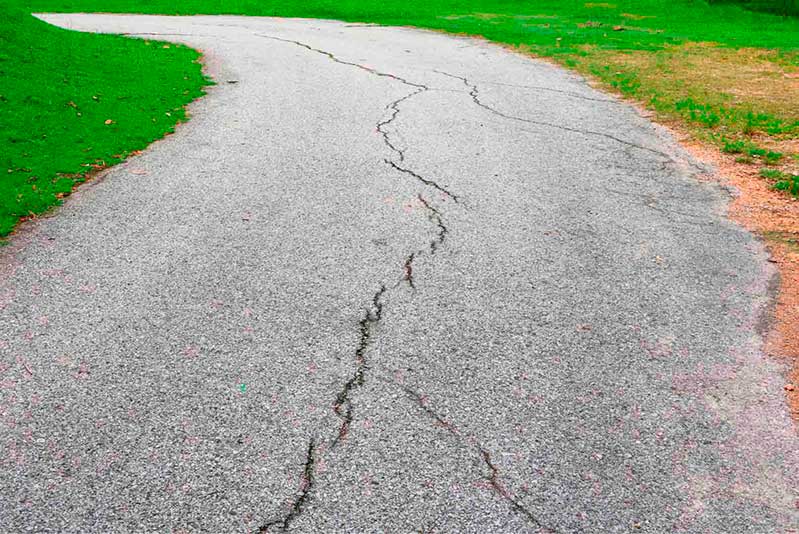From Concept to Conclusion: Partnering with a Premier Concrete Contractor
From Concept to Conclusion: Partnering with a Premier Concrete Contractor
Blog Article
The Green Option: Concrete Sidewalks for Your Community
Concrete pathways are an ubiquitous feature in most communities, yet their influence on the atmosphere is often forgotten. Choosing concrete for your neighborhood sidewalks can make a significant distinction in terms of sustainability and eco-friendliness. The advantages of selecting concrete go past mere visual appeals and functionality. By considering the environmental advantages and long-lasting impacts on the neighborhood, the choice of materials for sidewalks ends up being a crucial decision. Let's discover why concrete pathways could be the environment-friendly selection your neighborhood needs.
Benefits of Concrete Sidewalks
When thinking about the installation of walkways in a community, the advantages of picking concrete over other materials are numerous and considerable. Concrete sidewalks provide toughness, withstanding heavy foot website traffic, weather variations, and environmental aspects much better than alternative products like asphalt or gravel. This durability converts to cost-effectiveness over time, as concrete pathways call for less regular repair services and maintenance. Additionally, concrete is a versatile product that can be conveniently tailored to match the visual of any community via numerous finishes, shades, and patterns.

Durability and Durability
Exactly how can concrete sidewalks outmatch other materials in regards to durability and durability? Concrete pathways are renowned for their exceptional sturdiness and long life contrasted to alternate materials like asphalt or pavers. The inherent strength of concrete makes it highly resistant to breaking, changing, and basic deterioration caused by foot website traffic, climate changes, and various other ecological elements. Unlike asphalt, which can soften in heats and fracture in cold conditions, concrete keeps its architectural honesty, needing minimal maintenance with time.
In addition, concrete's resilience lowers the need for constant repairs or substitutes, making it a sustainable and cost-efficient choice for community pathways. By spending in concrete pathways, neighborhoods can appreciate a durable and trustworthy facilities that boosts the general visual allure and performance of the location.
Reduced Maintenance Requirements
Concrete pathways stand apart for their very little upkeep demands because of their long lasting nature and resilient efficiency. Unlike alternative products that may call for regular fixings or replacements, concrete sidewalks use a cost-effective remedy that demands little maintenance in time. Among the essential benefits of concrete walkways is their resistance to weathering and disintegration. This indicates they can withstand severe climate problems, hefty foot website traffic, and various other environmental variables without degrading quickly.
Regular upkeep for concrete pathways normally involves simple jobs such as routine cleaning to eliminate debris and occasional securing to shield the surface area. In comparison to products like asphalt or next pavers that may change, split, or deteriorate even more easily, concrete pathways preserve their architectural stability with marginal intervention. Furthermore, any type of fixings that might be required are usually local and can be addressed promptly, reducing both the moment and expense associated with maintenance.

Environmental Benefits
With a concentrate on sustainability and eco-friendliness, concrete walkways use significant ecological benefits that add to a greener community facilities. Concrete is a product known for its toughness and longevity, decreasing the requirement for frequent replacements. This longevity reduces the environmental effect linked with the manufacturing and transportation of new materials for sidewalk building and construction. In addition, concrete pathways have a high solar reflectance index, implying they reflect a considerable amount of sunshine as opposed to soaking up and maintaining heat. This high quality helps minimize the city warmth island effect, reducing power consumption for cooling structures and enhancing general comfort in metropolitan areas.
Furthermore, concrete is a permeable product that permits water to infiltrate into the ground, reducing stormwater runoff and helping in groundwater recharge. This assists avoid disintegration, lessen flooding, click for more info and preserve the natural balance of water systems in your area. By choosing concrete pathways, areas can make a lasting choice that positively affects the environment and boosts the lifestyle for citizens.
Enhancing Neighborhood Sustainability
By focusing on lasting framework solutions, neighborhoods can cultivate an unified equilibrium between environmental consciousness and area advancement. Enhancing neighborhood sustainability entails a multifaceted method that surpasses just the ecological benefits of concrete walkways. Executing environment-friendly spaces, promoting energy-efficient practices, and fostering a sense of area interaction are important elements of creating a lasting area.
One way to improve area sustainability is with the combination go to the website of absorptive concrete sidewalks. These walkways enable rain to permeate into the ground, decreasing stormwater drainage and decreasing the stress on community drainage systems. Click Here. By including permeable sidewalks, neighborhoods can improve water quality, reduce flooding threats, and boost overall environmental strength
In addition, advertising alternative transportation methods such as strolling and cycling can dramatically reduce carbon exhausts and advertise a healthier lifestyle amongst locals. Developing safe pedestrian pathways, bike lanes, and assigned greenways can encourage residents to count much less on autos, even more adding to the community's sustainability goals.
Final Thought
To conclude, concrete pathways offer many benefits for neighborhoods, including durability, low maintenance demands, and environmental advantages. By selecting concrete pathways, communities can improve their sustainability and add to a more green setting. It is clear that concrete sidewalks are the perfect option for communities looking to enhance their facilities in a eco friendly and durable fashion.
When thinking about the installation of sidewalks in a neighborhood, the benefits of choosing concrete over other materials are various and significant. Additionally, concrete's durability minimizes the demand for frequent repairs or substitutes, making it a economical and sustainable selection for community walkways (Concrete Contractor).With an emphasis on sustainability and eco-friendliness, concrete sidewalks supply significant ecological advantages that contribute to a greener community infrastructure. Enhancing area sustainability includes a diverse strategy that goes beyond simply the ecological advantages of concrete walkways.In final thought, concrete walkways use many advantages for communities, consisting of sturdiness, low upkeep demands, and ecological advantages
Report this page